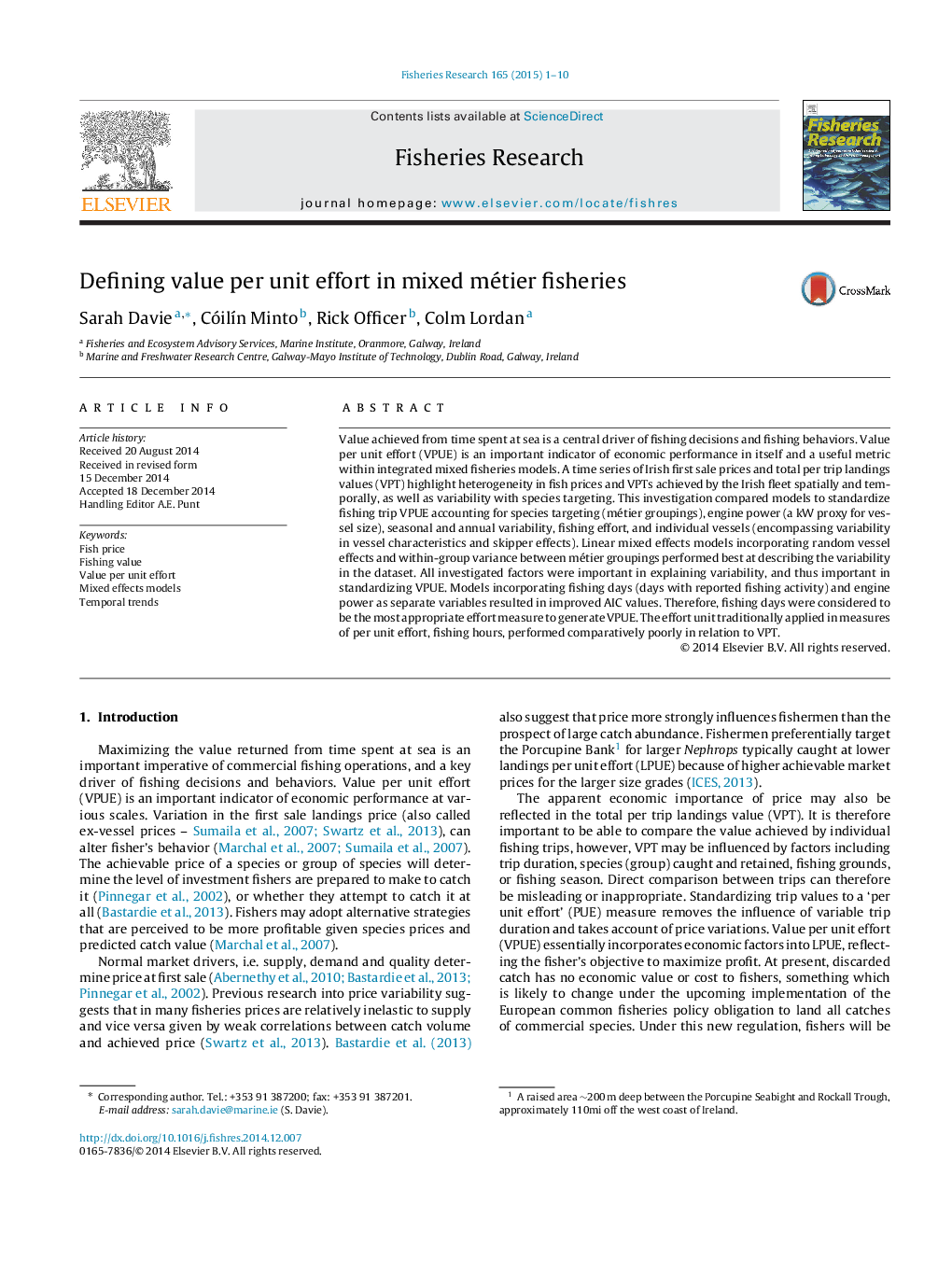| Article ID | Journal | Published Year | Pages | File Type |
|---|---|---|---|---|
| 6385624 | Fisheries Research | 2015 | 10 Pages |
Abstract
Value achieved from time spent at sea is a central driver of fishing decisions and fishing behaviors. Value per unit effort (VPUE) is an important indicator of economic performance in itself and a useful metric within integrated mixed fisheries models. A time series of Irish first sale prices and total per trip landings values (VPT) highlight heterogeneity in fish prices and VPTs achieved by the Irish fleet spatially and temporally, as well as variability with species targeting. This investigation compared models to standardize fishing trip VPUE accounting for species targeting (métier groupings), engine power (a kW proxy for vessel size), seasonal and annual variability, fishing effort, and individual vessels (encompassing variability in vessel characteristics and skipper effects). Linear mixed effects models incorporating random vessel effects and within-group variance between métier groupings performed best at describing the variability in the dataset. All investigated factors were important in explaining variability, and thus important in standardizing VPUE. Models incorporating fishing days (days with reported fishing activity) and engine power as separate variables resulted in improved AIC values. Therefore, fishing days were considered to be the most appropriate effort measure to generate VPUE. The effort unit traditionally applied in measures of per unit effort, fishing hours, performed comparatively poorly in relation to VPT.
Keywords
Related Topics
Life Sciences
Agricultural and Biological Sciences
Aquatic Science
Authors
Sarah Davie, CóilÃn Minto, Rick Officer, Colm Lordan,
